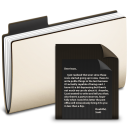چاپ صفحه | صفحه نخست سامانه |  چکیده مقاله |  نویسندگان | مؤسسه علوم و صنایع غذایی |
| کد مقاله | 2319 |
| عنوان فارسی مقاله | Improvement of friable callus induction of Crocus sativus L. and establishment of a cell suspension culture system with high biomass |
| عنوان لاتین مقاله | Improvement of friable callus induction of Crocus sativus L. and establishment of a cell suspension culture system with high biomass |
| نمایه علمی معتبر | scopus |
| IF | |
| عنوان نشریه | journal of horticulture and postharvest research |
| شماره نشریه | 4 |
| دوره | 6 |
| سال انتشار شمسی | 1402/09/27 |
| سال انتشار میلادی | 2023 |
| Purpose: This study aims to explore the potential of in vitro culture as a method for scaling up the production of saffron based medicinal compounds, the most expensive spice renowned. Emphasis is placed on the critical role of friable callus (FC) formation as a prerequisite for successful suspension culture. Research method: The research primarily investigates FC formation, focusing on the impact of varying strengths of Murashige and Skoog (MS) medium as well as combinations of NAA or 2,4-D and BA or Kin on compact callus. Subsequently, the study involves supplementing the MS medium with different concentrations of 2,4-D, kin, zeatin, glutamine, sucrose, and nitrogen to establish a cell suspension culture. Findings: The highest FC yield was achieved on a solid medium containing 2,4-D (1 mg l-1)+Kin (0.2 mg l-1), resulting in a fresh weight (FW) of 0.413 g. Furthermore, MS combined with 2,4-D (1 mg l-1)+Kin (0.2 mg l-1)+glutamine (10 mg l-1), as well as MS+2,4-D (0.5 mg l-1)+zeatin (0.3 mg l-1)+glutamine (10 mg l-1), demonstrated the highest FW under suspension conditions. The study also identified that 30 g l-1 sucrose and 30 μM were optimal for inducing maximum FW. Research limitations: Cell biomass is influenced by several factors that should to be optimized. Originality/Value: This research concludes that a cell suspension system holds promise for rapidly generating sufficient cell biomass to produce valuable secondary metabolites within a limited timeframe and space. Notably, the system successfully increased biomass from 0.2 to 1.2 g, underscoring its potential for efficient saffron-based product development. |
| نویسنده | نفر چندم مقاله |
|---|---|
| قدیر رجب زاده اوغاز | سوم |
| سید مهدی زیارت نیا | دوم |
| سمیه امینی | اول |